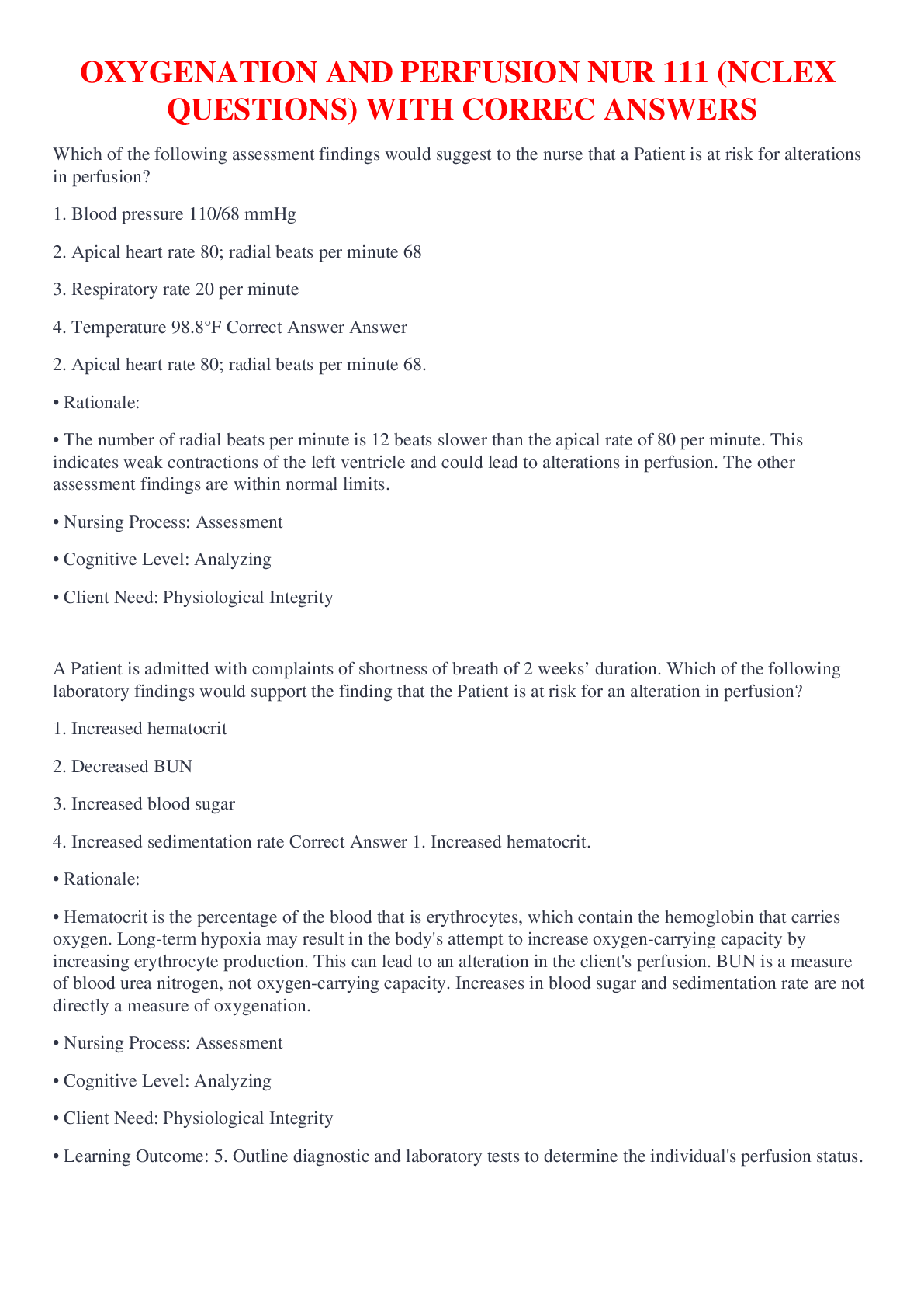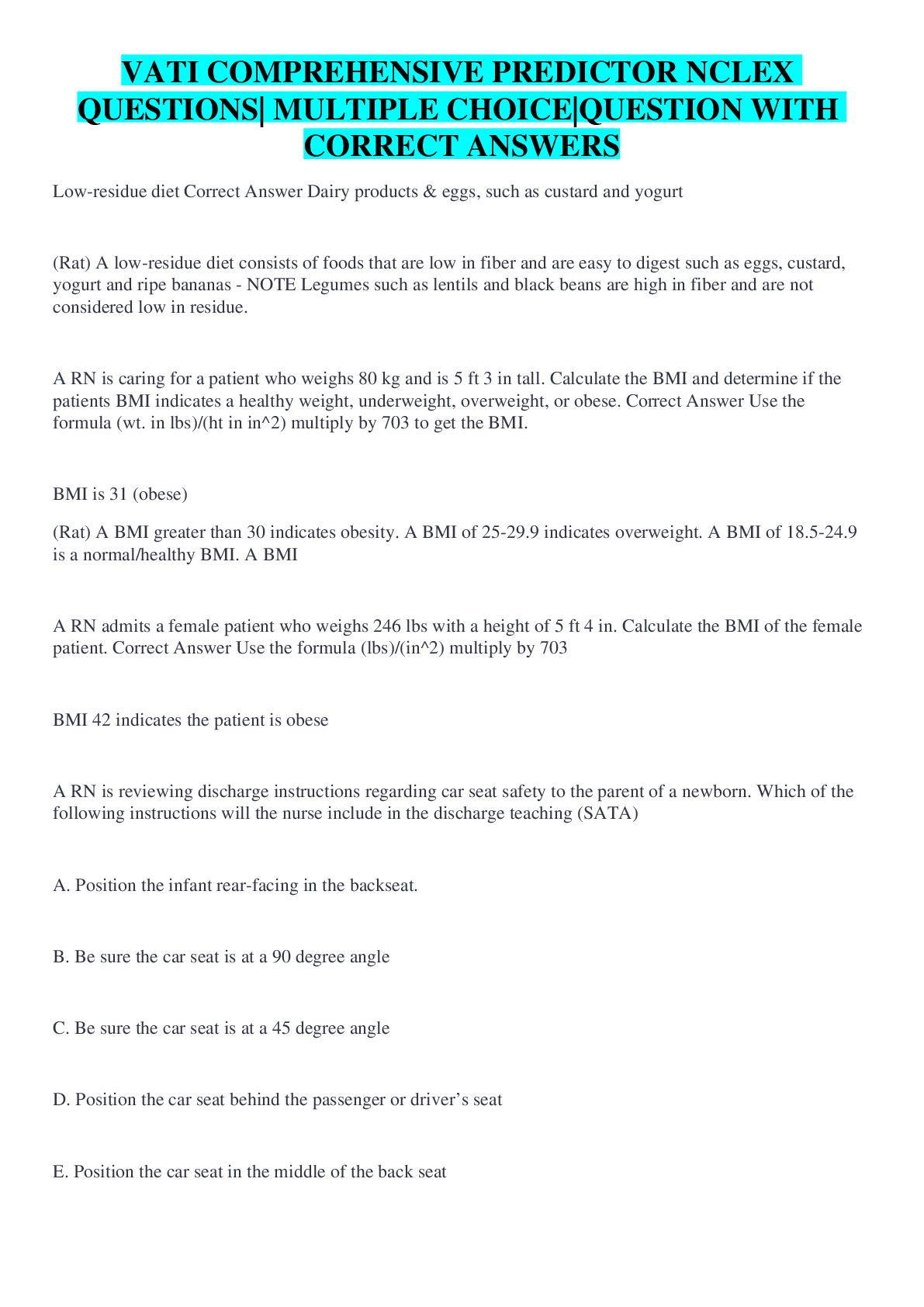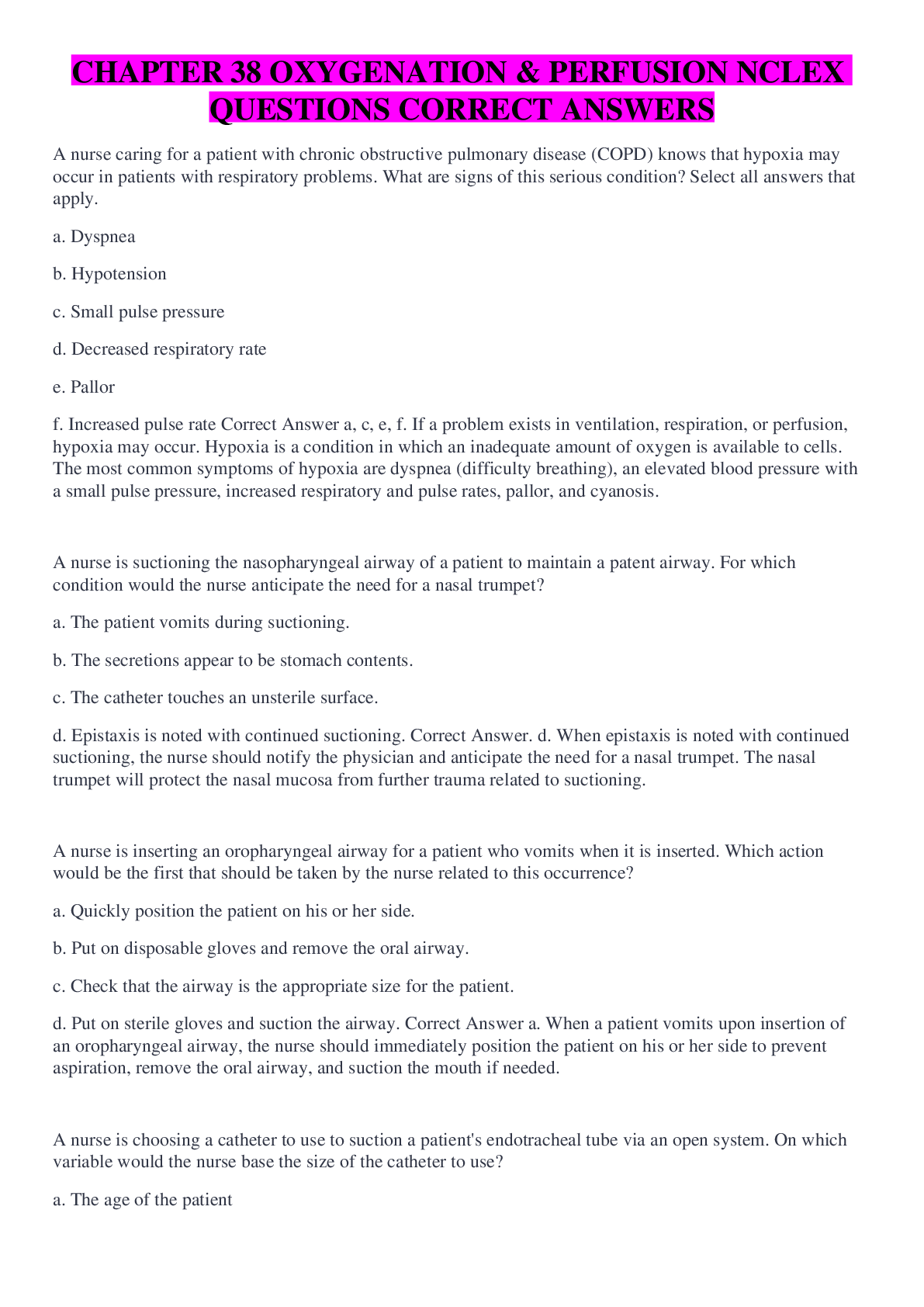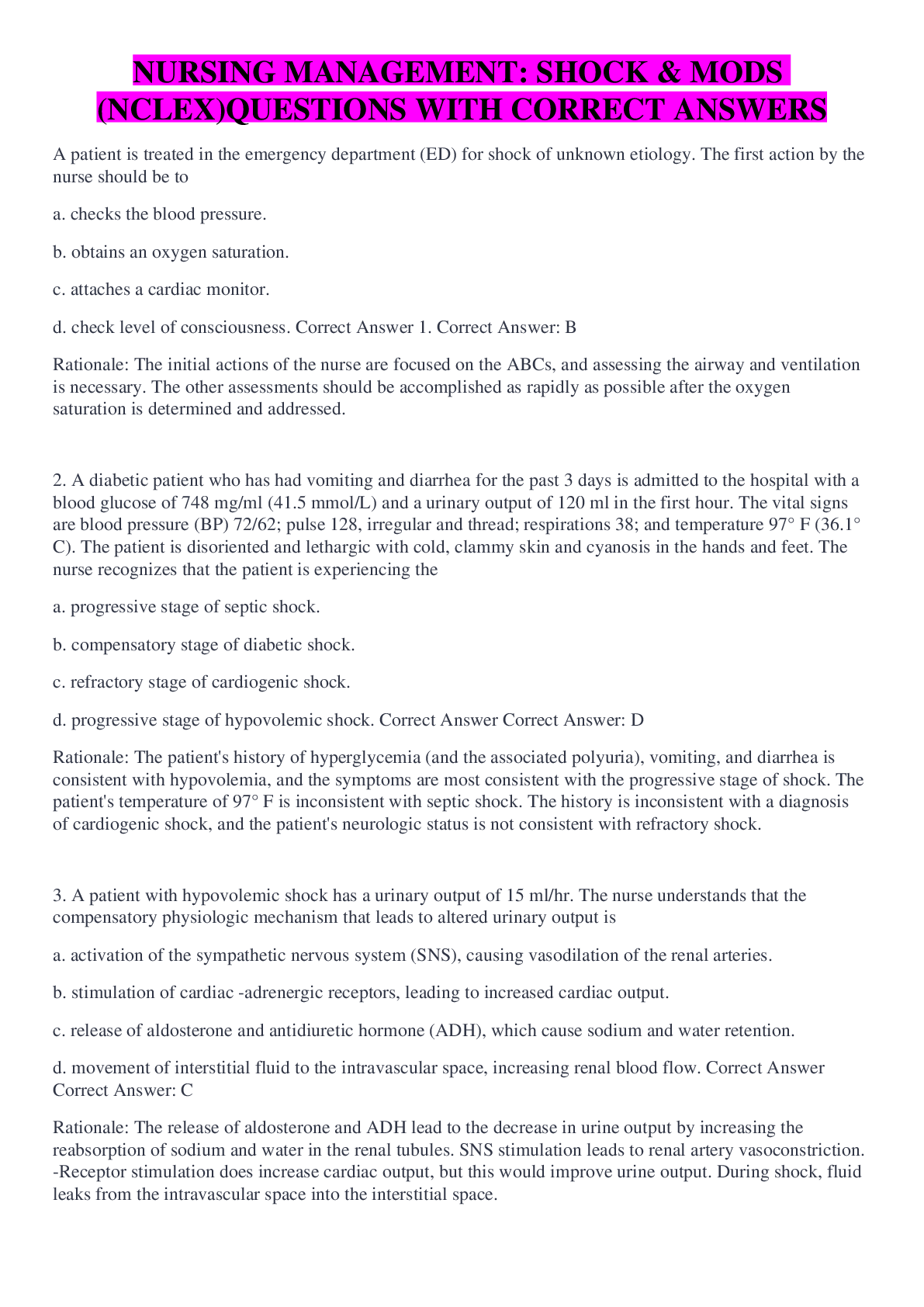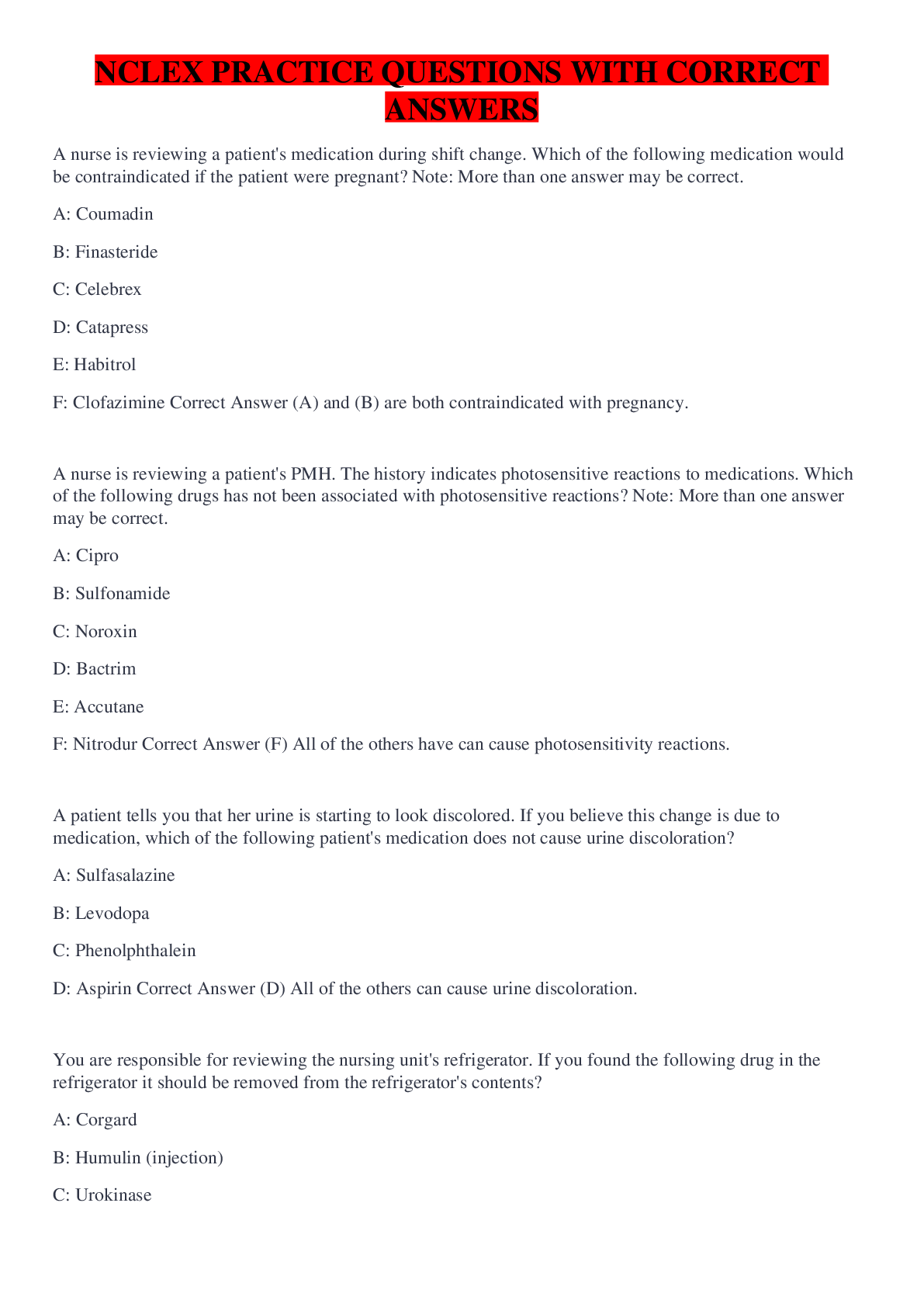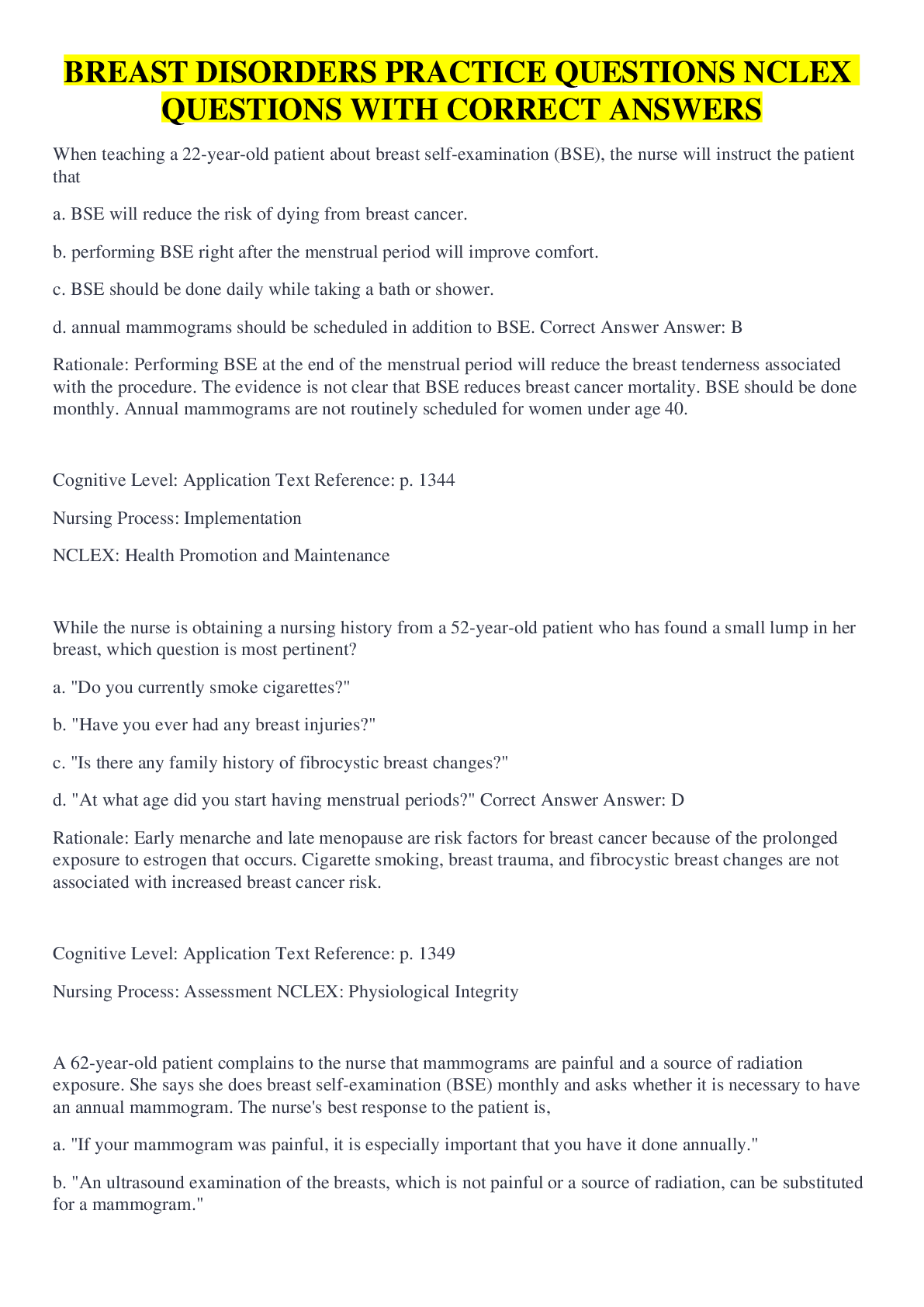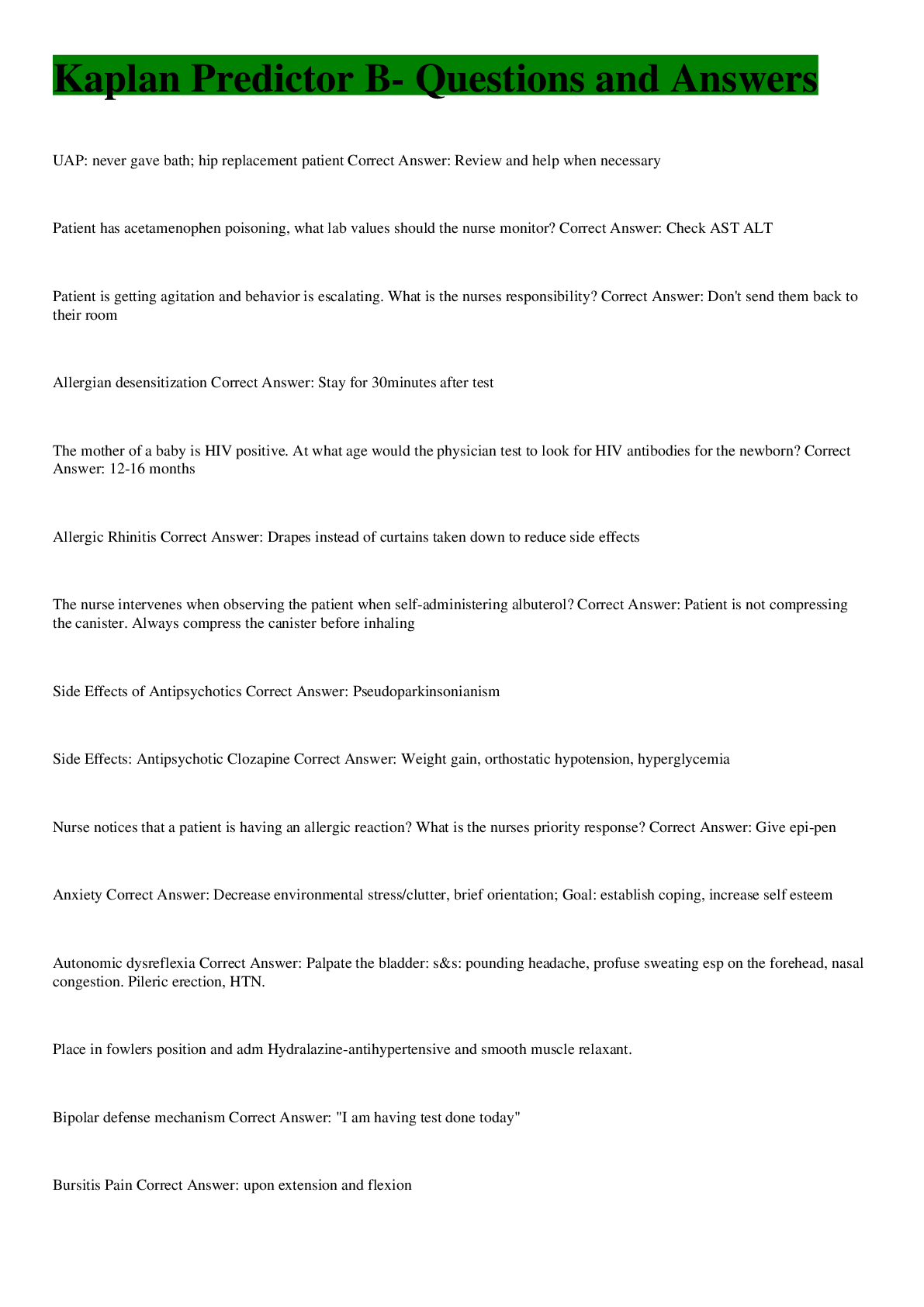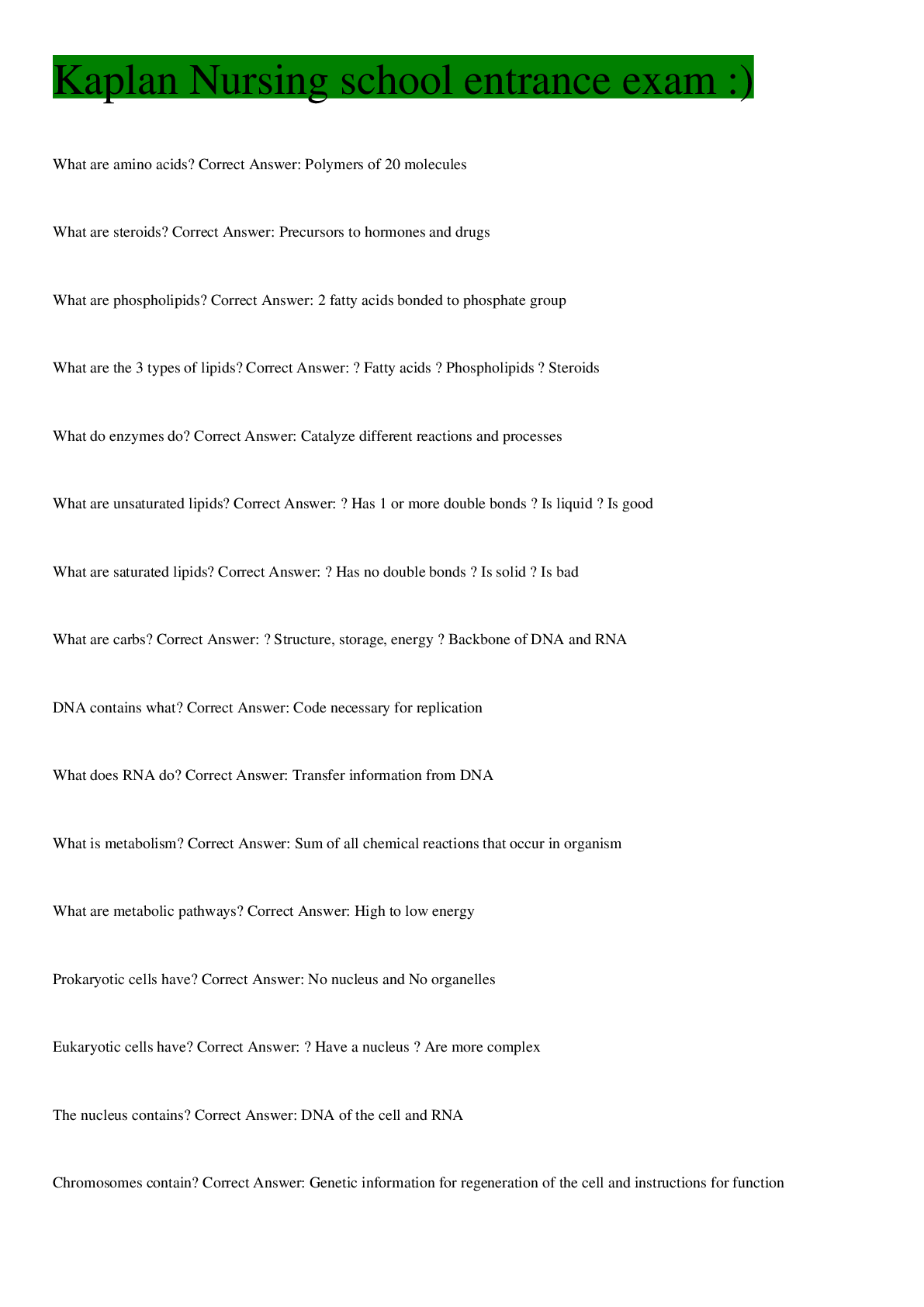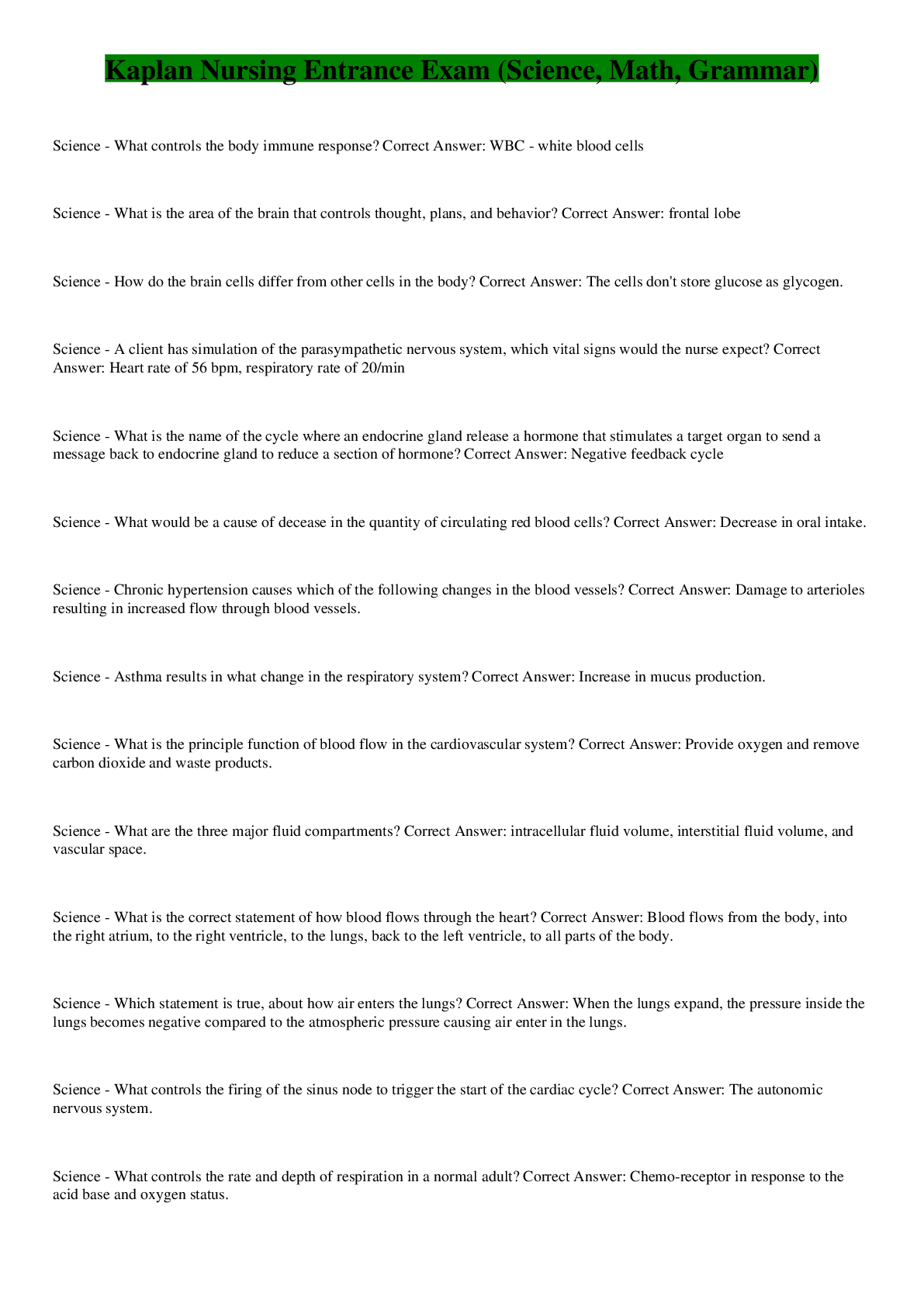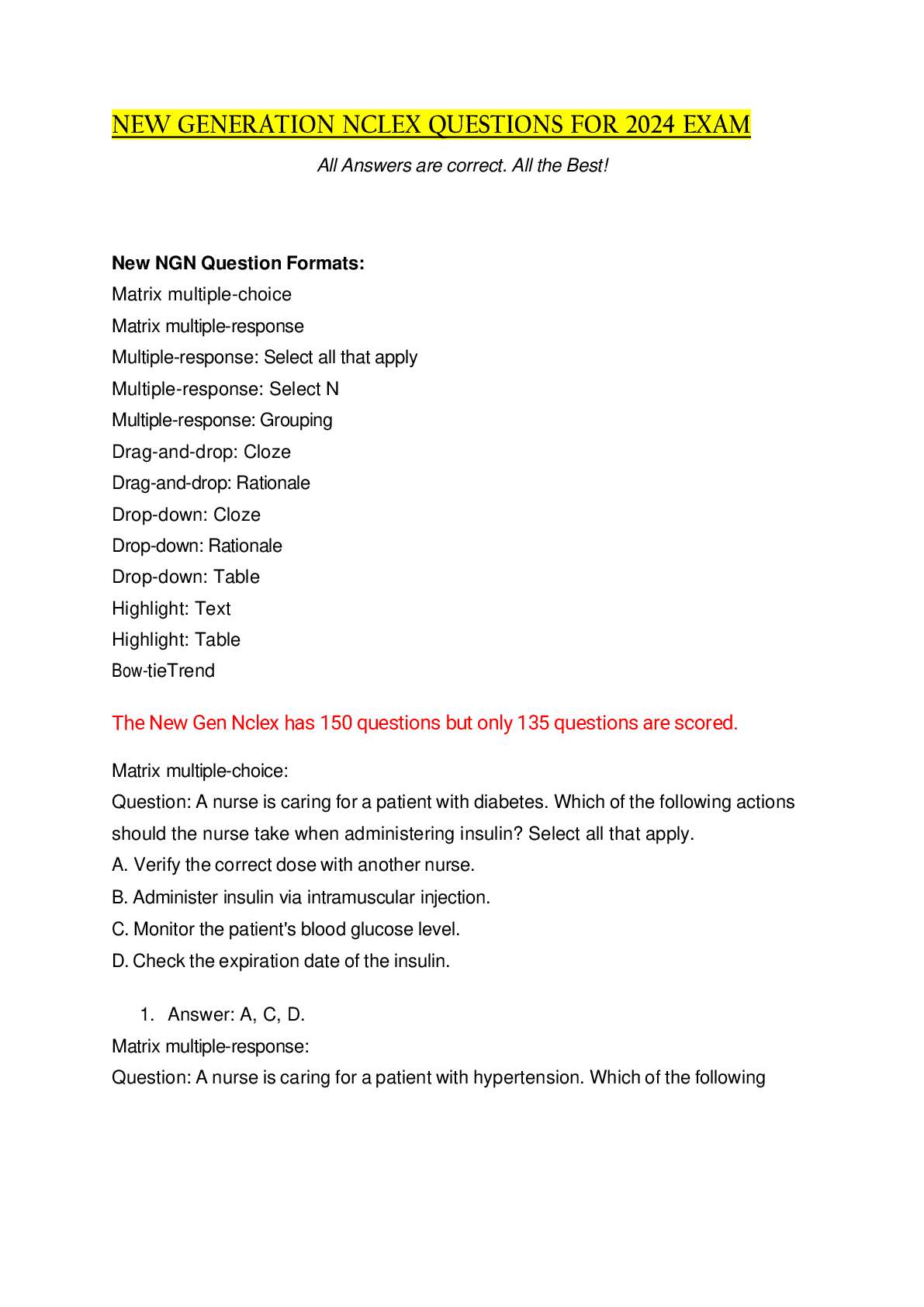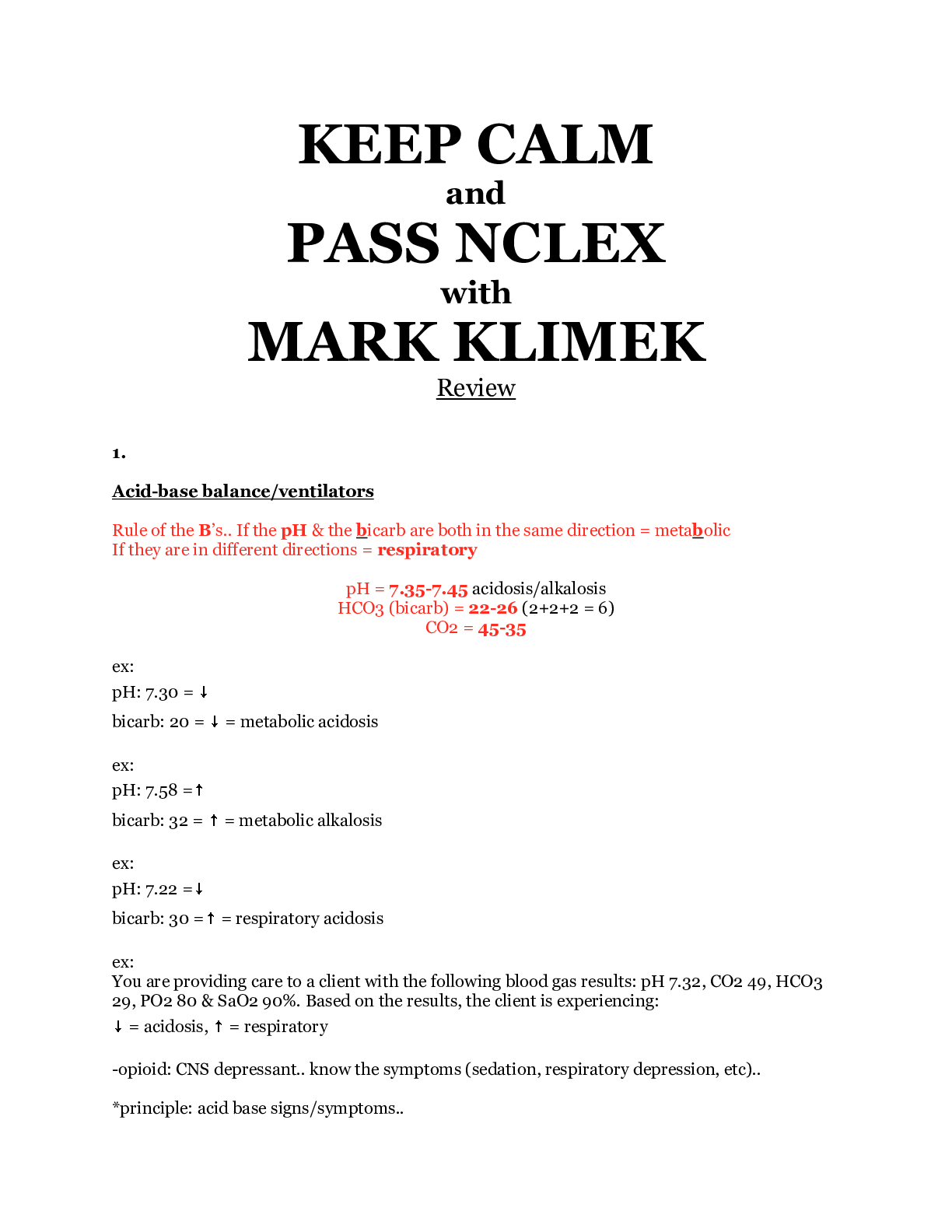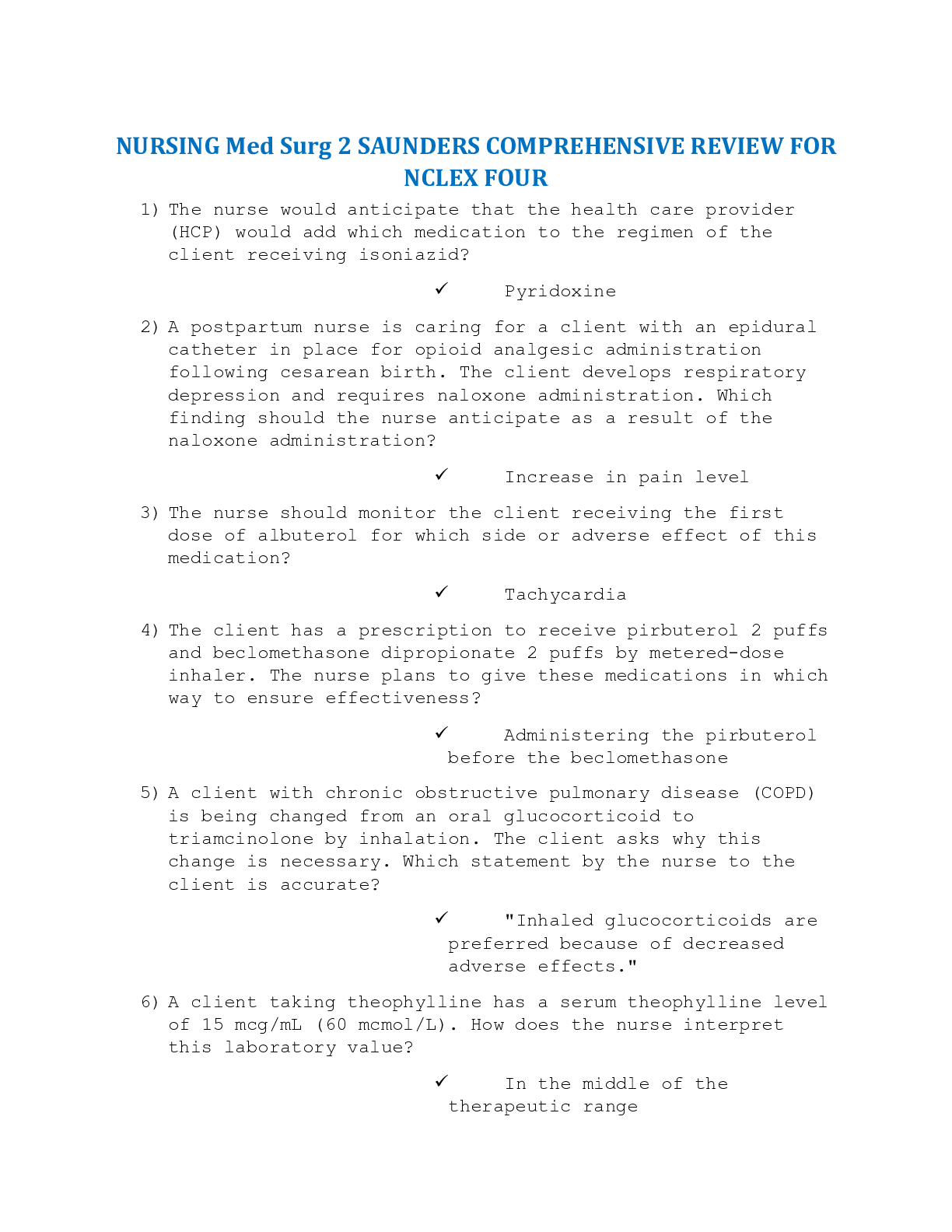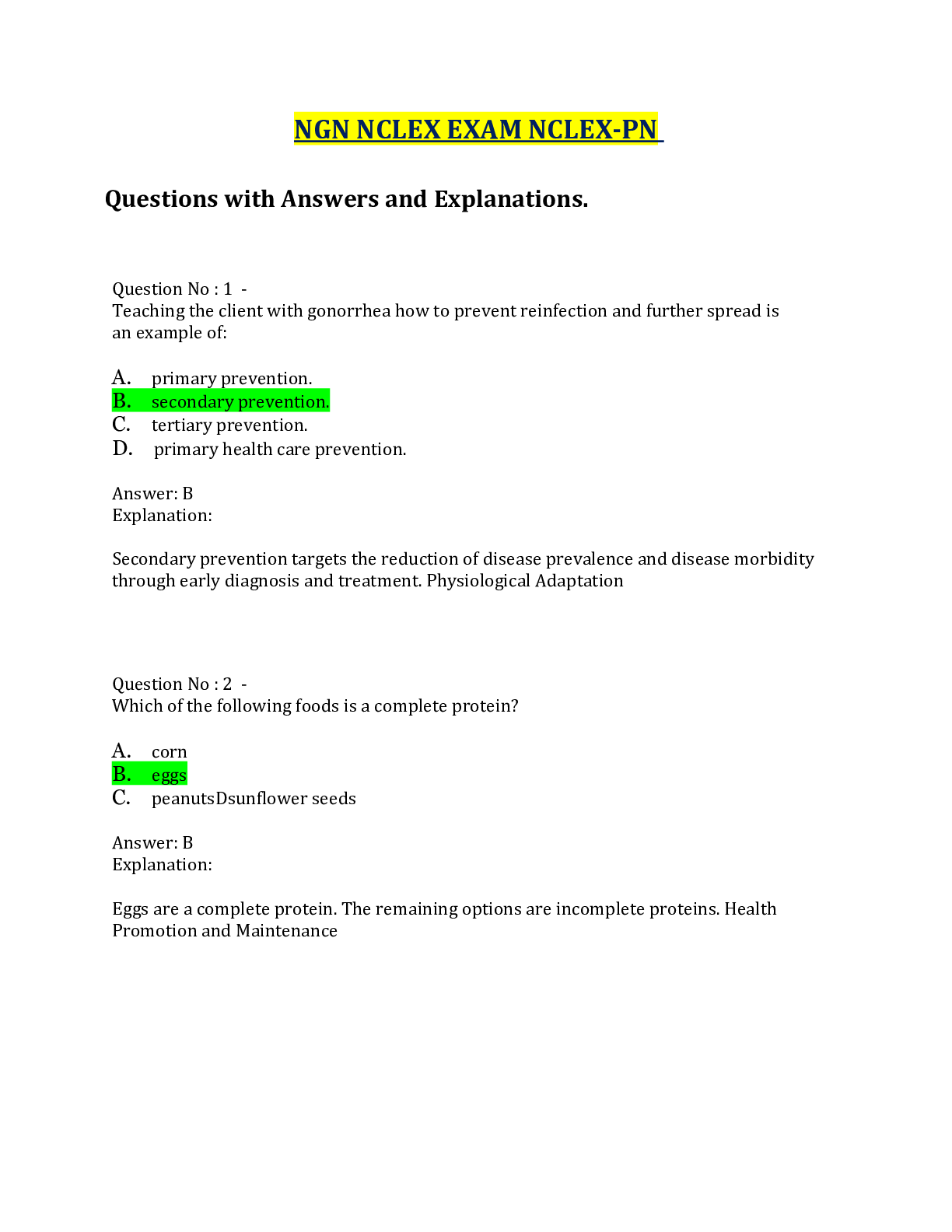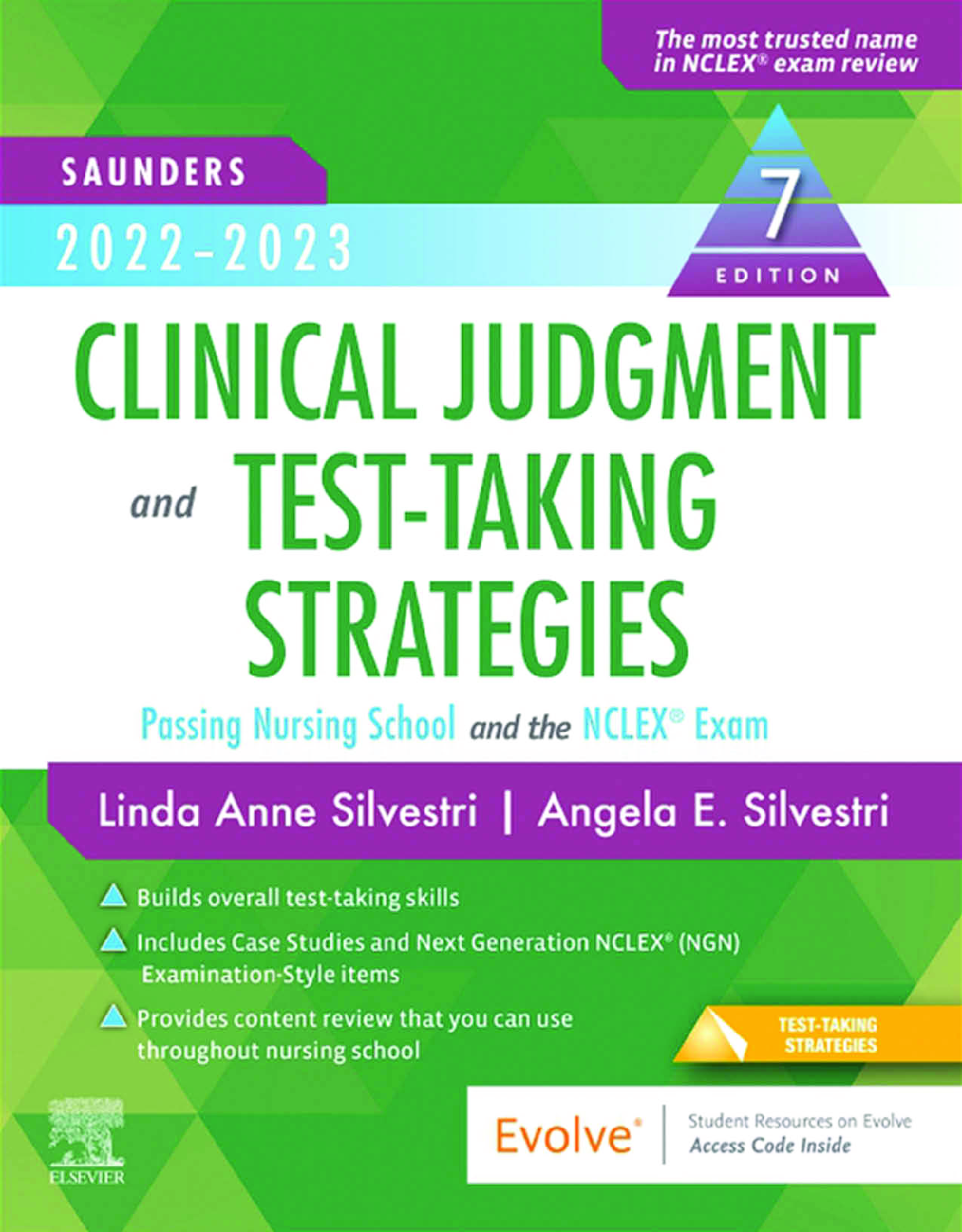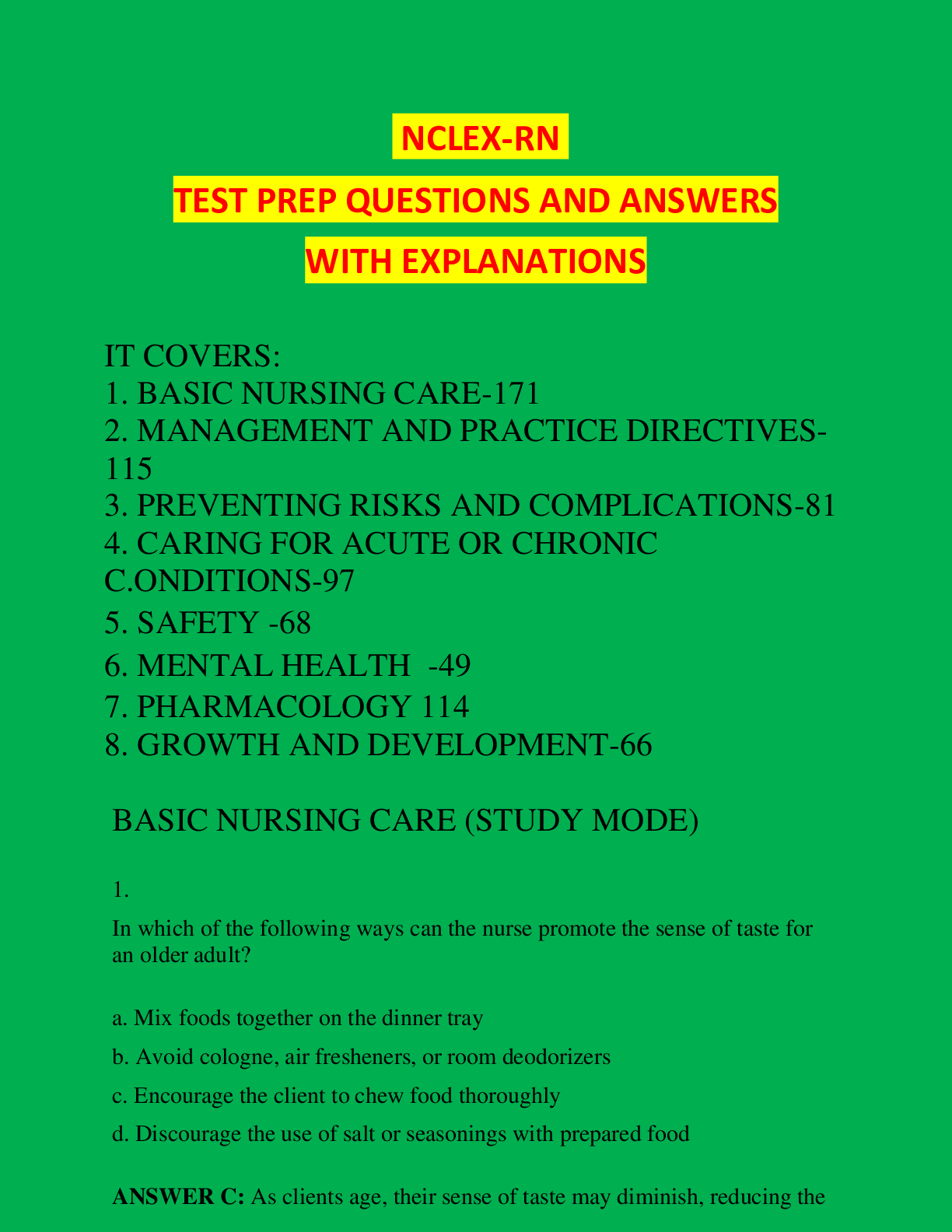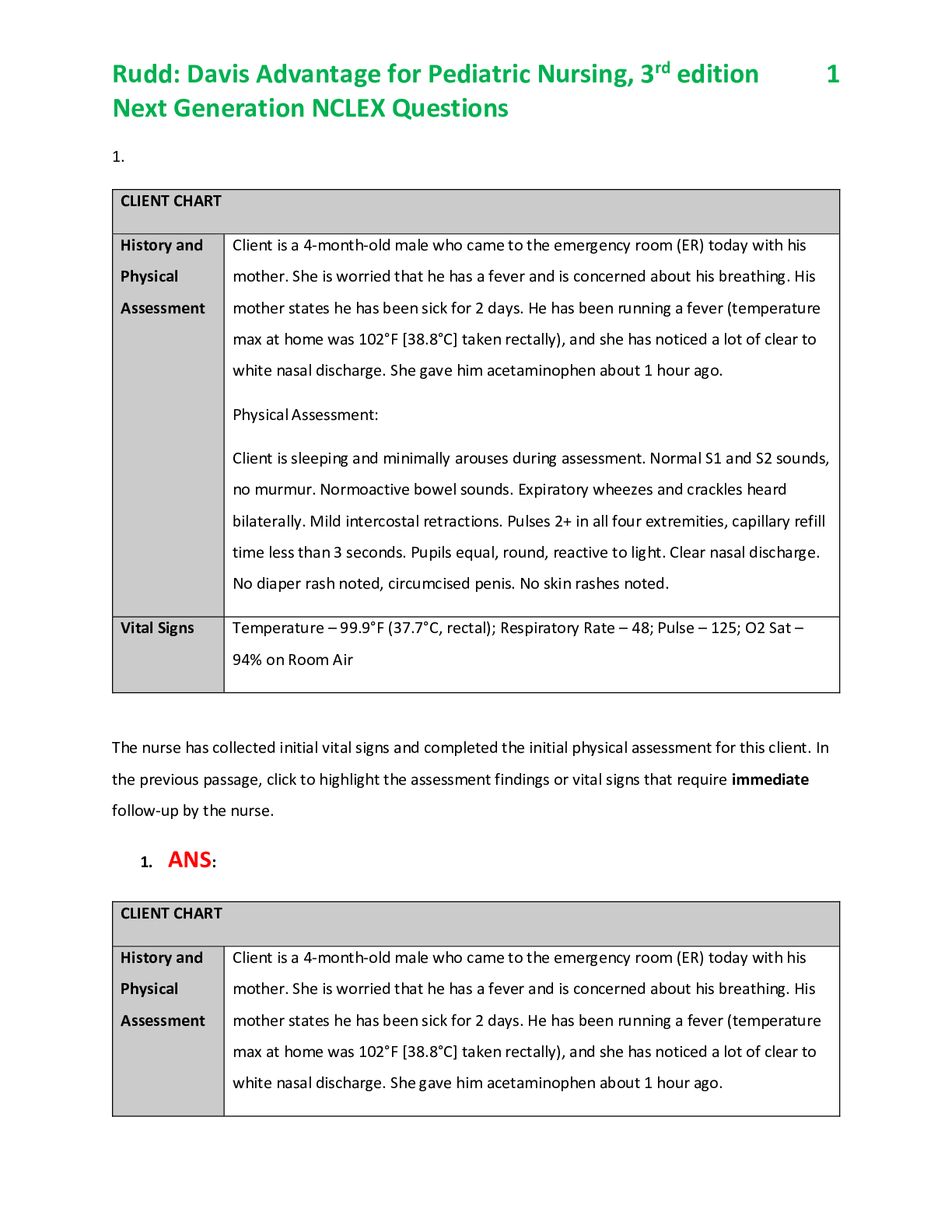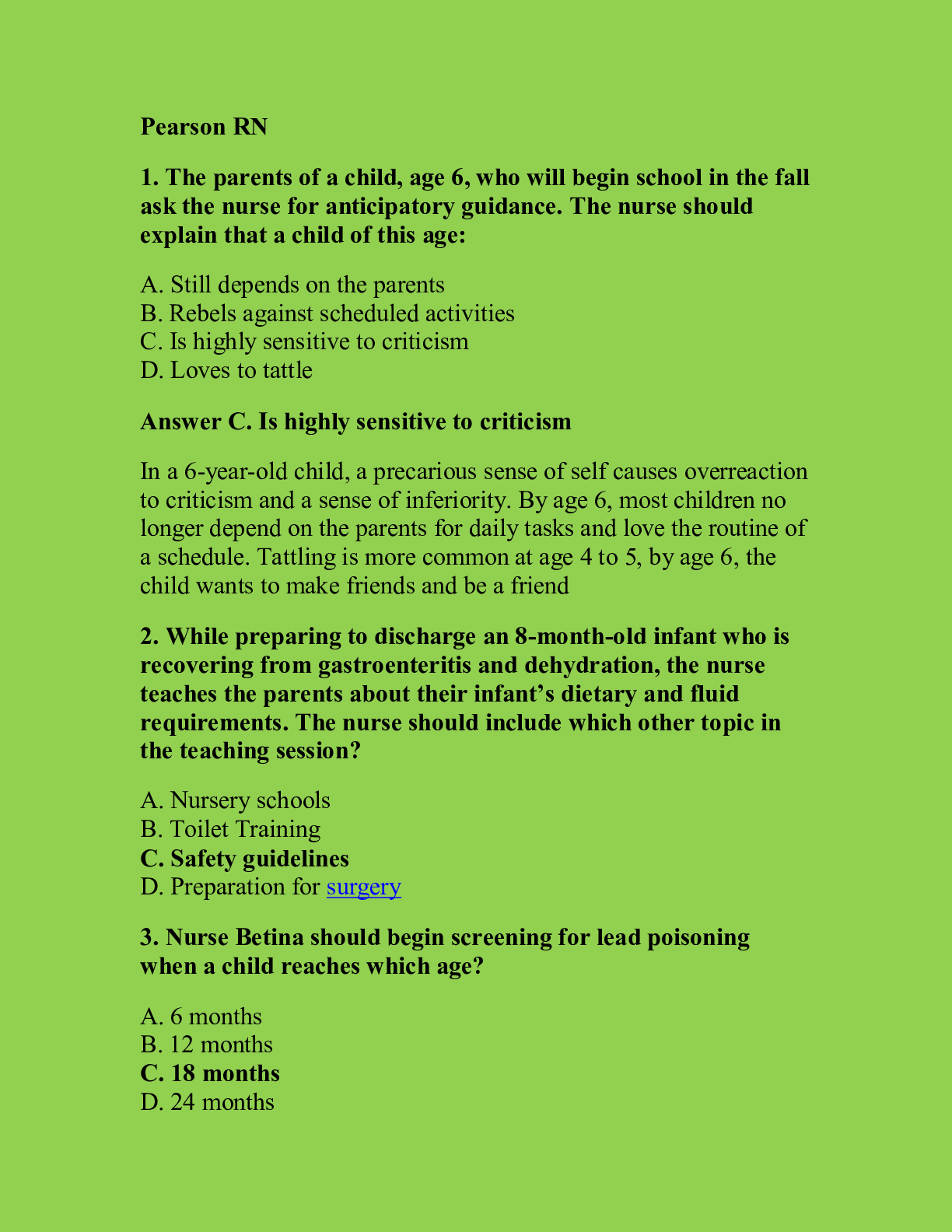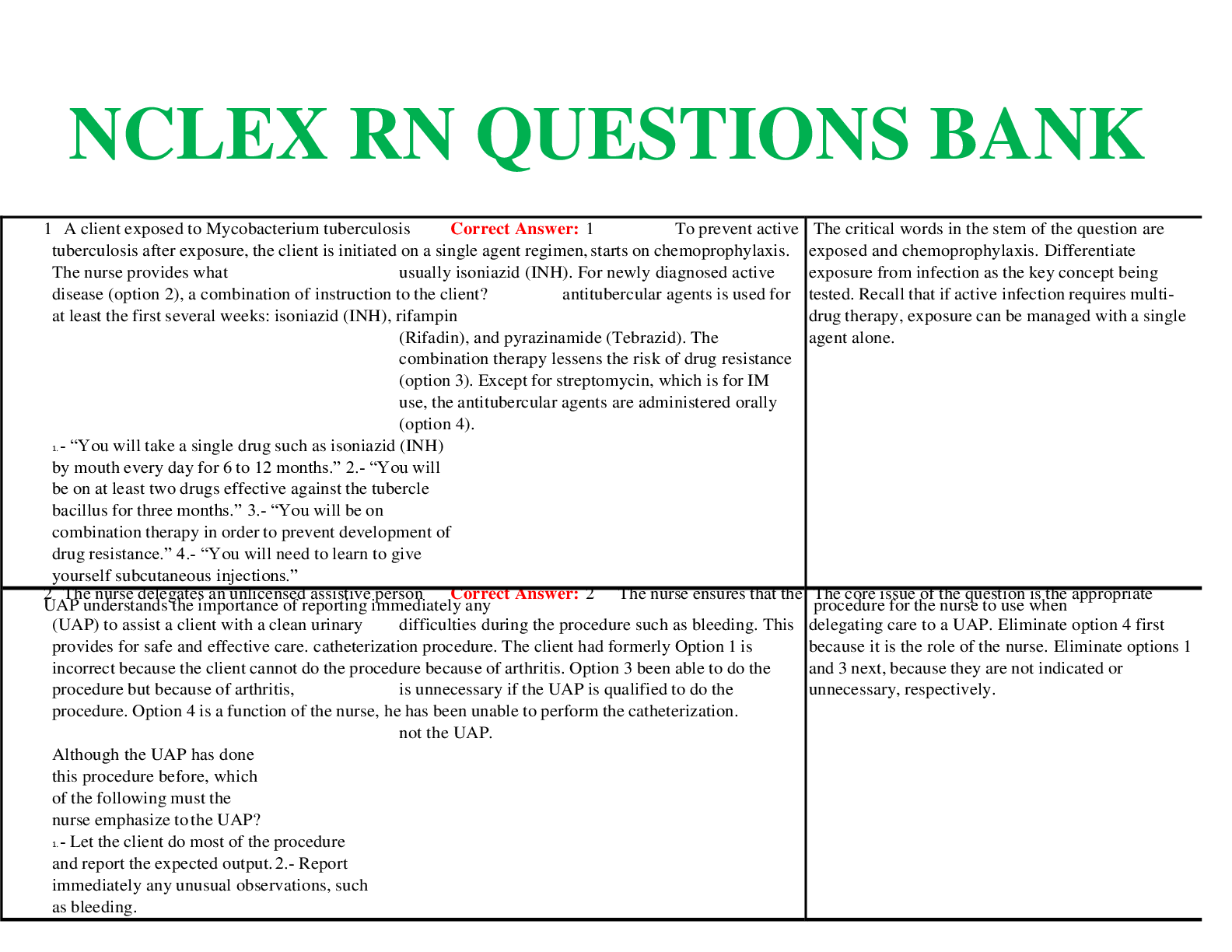*NURSING > NCLEX > NCLEX PRACTICE QUESTIONS PATIENT EDUCATION| CHAPTER 25: PATIENT EDUCATION| QUESTIONS AND CORRECT ANS (All)
NCLEX PRACTICE QUESTIONS PATIENT EDUCATION| CHAPTER 25: PATIENT EDUCATION| QUESTIONS AND CORRECT ANSWERS
Document Content and Description Below
1. A nurse is asked about the goal of patient education. What is the nurse's best response? The goal of educating others is to help people a. Meet standards of the Nurse Practice Act. b. Achieve opt... imal levels of health. c. Become dependent on the health care team. d. Provide self-care only in the hospital. Correct Answer ANS: B The goal of educating others about their health is to help individuals, families, or communities achieve optimal levels of health. Although all state Nurse Practice Acts acknowledge that patient teaching falls within the scope of nursing practice, this is the nurse's standard, not the goal of education. Patient education helps patients make informed decisions about their care and become healthier and more independent, not dependent. Nurses provide patients with information needed for self-care to ensure continuity of care from the hospital to the home. 2. A nurse is teaching a group of healthy adults about the benefits of flu immunizations. Which purpose of patient education is the nurse fulfilling? a. Restoration of health b. Coping with impaired functions c. Promotion of health and illness prevention d. Health analogies Correct Answer ANS: C As a nurse, you are a visible, competent resource for patients who want to improve their physical and psychological well-being. In the school, home, clinic, or workplace, you promote health and prevent illness by providing information and skills that enable patients to assume healthier behaviors. Injured and ill patients need information and skills to help them regain or maintain their level of health; this is referred to as restoration of health. Not all patients fully recover from illness or injury. Many have to learn to cope with permanent health alterations; this is known as coping with impaired functions. Analogies supplement verbal instruction with familiar images that make complex information more real and understandable. For example, when explaining arterial blood pressure, use an analogy of the flow of water through a hose. 3. A nurse provides teaching about coping with long-term impaired functions. Which situation serves as the best example? a. Teaching a family member to give medications through the patient's permanent gastric tube b. Teaching a woman who recently had a hysterectomy about her pathology reports c. Teaching expectant parents about physical and psychological changes in childbearing women d. Teaching a teenager with a broken [Show More]
Last updated: 1 year ago
Preview 1 out of 11 pages

Reviews( 0 )
Document information
Connected school, study & course
About the document
Uploaded On
Dec 14, 2022
Number of pages
11
Written in
Additional information
This document has been written for:
Uploaded
Dec 14, 2022
Downloads
0
Views
66

